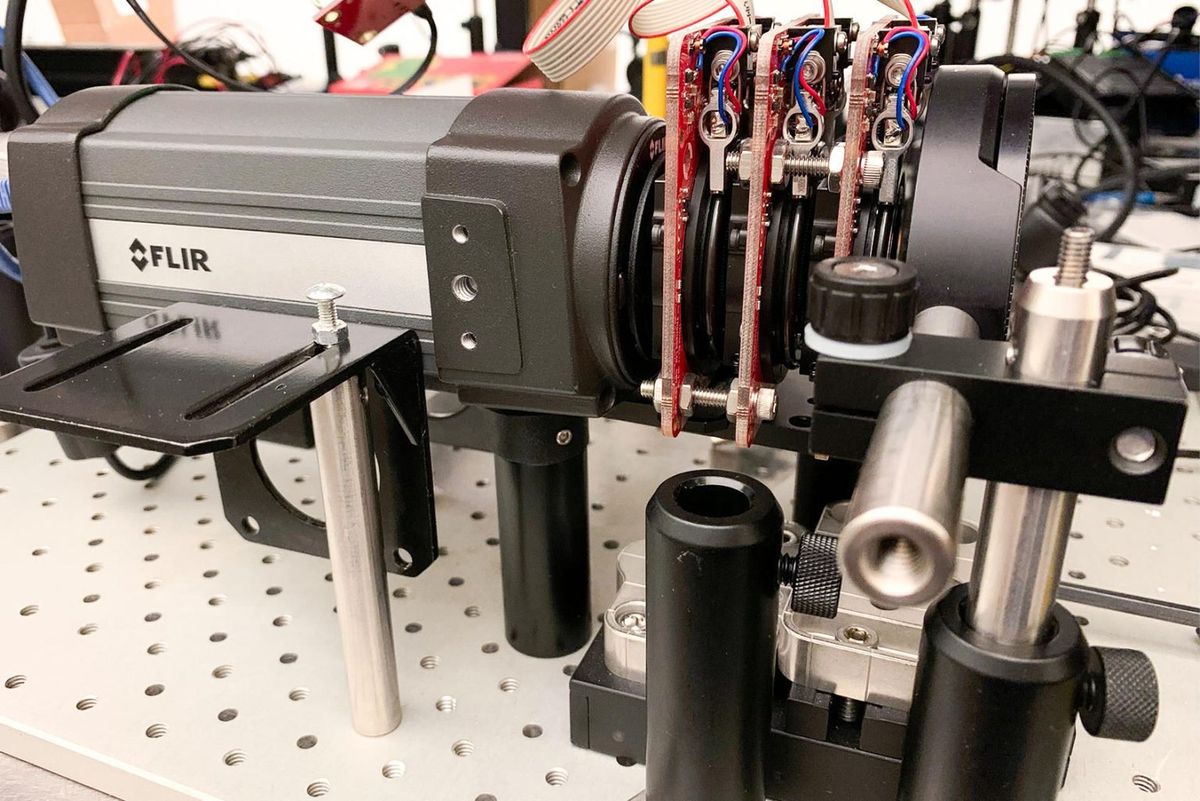Seeing heat, as a cutting-edge field of research today, is getting hotter.
Purdue University researchers have merged the power of advanced surfaces (including metamaterials) with thermal imaging algorithms to create technology that could open new frontiers in machine vision and autonomous systems.
Previously, such advanced surfaces had been used for imaging tech in the visible spectrum. However, using these frontier technologies for infrared thermal imaging has remained largely unexplored until now.
“The robustness of the device and its simplicity significantly enhance its practicality for real-world applications.” —Xueji Wang, Purdue University
The Purdue team have dubbed their device the Spinning MetaCam, which they report can help classify materials as well as provide new possibilities for technologies in security, thermography, medical imaging, and remote sensing.
To make these applications potentially realizable, the Purdue team is applying a field of materials science called metasurfaces—structured electromagnetic nanoscale surfaces crafted to behave a little like aqueducts for water, filtering and channeling light.
Unlike traditional materials, which naturally bend, reflect, or absorb light, metasurfaces are fitted with subwavelength-scale structures that manipulate light’s intensity, spectrum, and polarization. In the case of the Spinning MetaCam, the researchers tailored their metasurfaces as a series of adjustably-oriented gold structures on wheels of zinc selenide wafers.
“Our system leverages specially designed metasurfaces with cutting-edge computational algorithms,” says Xueji Wang, a postdoctoral researcher in electrical and computer engineering at Purdue. “By stacking and spinning these metasurfaces, we break down thermal light into its spectral...components.”
Wang adds that the researchers used standard thermal sensors for their device. Their essential innovations come in on either side—before light strikes the sensor and how they then process the data the sensors generate.
But the key to their method, Wang notes, involves those spinning metasurfaces, where the spinning operation enables the imaging system to maximize the most relevant spectral and thermal information sent through to the sensor. This approach, Wang adds, outperforms traditional infrared filters made of conventional, nonrotating materials.
The spinning operation is achieved with standard rotators, enhancing robustness compared to delicate mirror movements required in interferometers. “The robustness of the device and its simplicity significantly enhance its practicality for real-world applications,” said Wang.
Applications for Spinning MetaCam
Compared to traditional thermal imaging, the Spinning MetaCam offers several advantages, according to Wang. Its compact design, measuring roughly 10 by 10 by 10 centimeters, stands in stark contrast to bulky traditional spectral thermal imagers. Because of its potentially portable and versatile configuration, Spinning MetaCam, Wang says, could be used in search-and-rescue operations, industrial settings, airport security, and in military and border-patrol uses.
“Traditional spectral thermal imagers are often bulky benchtop systems,” Wang says, “Relying on large filter wheels or interferometers, making them unsuitable for portable devices.”
Using long-wavelength infrared light (LWIR), the group’s camera has potential to detect concealed objects or substances—perhaps for security or military purposes. And its sensitivity to minute temperature differences presents other opportunities—perhaps in medical settings—for possible developers to use, Wang says.
The technology’s potential in autonomous navigation is also noteworthy. Of course, lidar, radar, and sonar have all been broadly used or at least considered for self-driving technologies. But the MetaCam represents the latest development in another imaging modality, what researchers last year dubbed heat-assisted detection and ranging, or HADAR. As the authors of the 2023 paper note, HADAR doesn’t necessarily require illumination and so could be a particularly useful modality for nighttime and low-light applications.
Wang says the next phases for the technology involve production challenges, acknowledging a need for nano-fabrication and specialized infrared materials. These all represent complexities in the present-day pipeline, Wang says, but at the same time the larger field of meta-optics is rapidly evolving.
“Our next step will focus on enhancing spectral resolution, transmission efficiency, and the speed of image capture and processing,” Wang says.
The goal, he adds, is to overcome the camera’s current limitations related to high-temperature objects. “We aim to extend this to room-temperature imaging by using improved materials, metasurface designs, and techniques like antireflection coatings,” Wang says.
The researchers published their findings this month in the journal Optica.
Dexter Johnson is a contributing editor at IEEE Spectrum, with a focus on nanotechnology.



